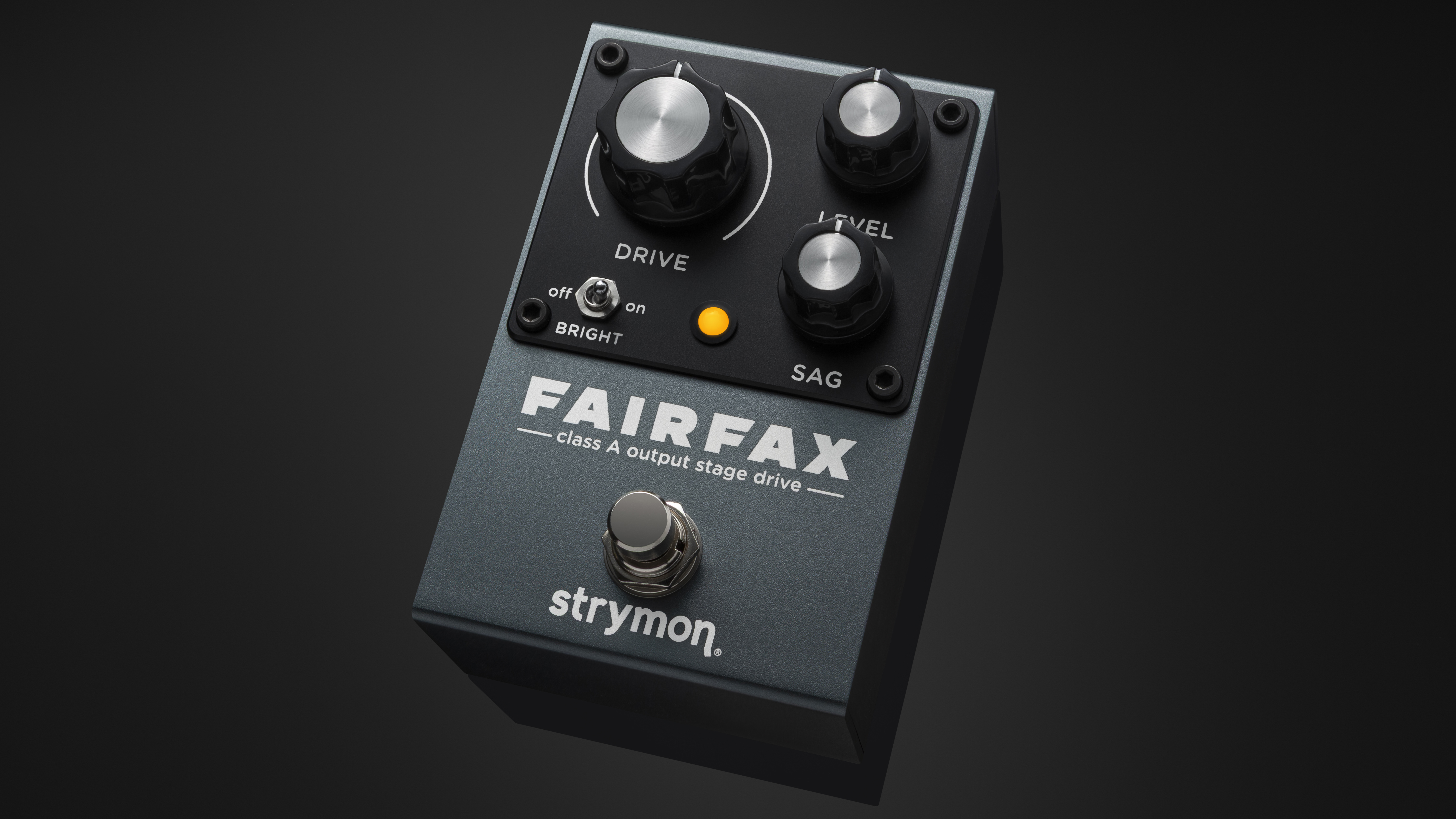"We've been talking about doing a signature guitar for some time, but it was always met with false starts." Coheed and Cambria's Claudio Sanchez walks us through his wicked new guitar company and his first-ever signature model
From the latest album to his approach to songwriting and why he decided to stop waiting on Gibson and create his own signature model — Claudio tells us all
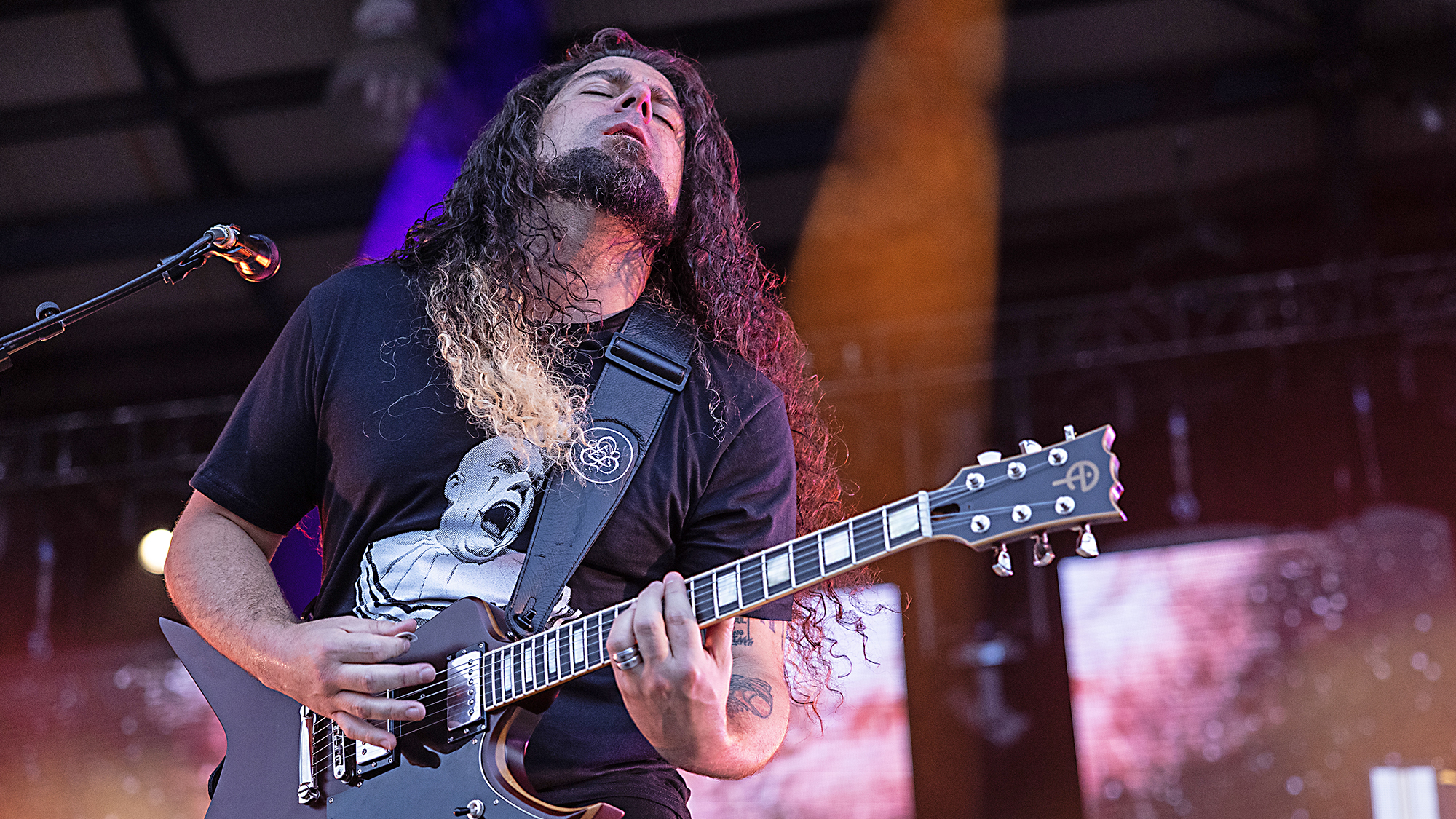
Few guitarists in modern rock carry the kind of multidimensional creative weight Claudio Sanchez does. As the mastermind behind Coheed and Cambria’s sprawling sci-fi epics, his larger-than life guitar work, along with his signature vocal sound, has always served as the sonic secret weapon to the bands success.
But on the band’s latest album, Vaxis — Act III: The Father of Make Believe, Sanchez turns inward, crafting a sound that’s more personal than ever before. Thankfully, it's as ambitious as we’ve come to expect from the New York–based proggers.
Not content to simply pen another chapter in his decade-long space opera, the frontman has also launched himself into an entirely new venture: Evil Instruments, his very own guitar brand aimed at giving players access to the tools of the trade that he is using day after day on tour. We caught up with Sanchez to talk tone, songwriting, and why he chose to stop waiting for Gibson and make his own signature model electric guitar.
“It's definitely an exploration. I think every Coheed record is," Sanchez says of the new record. "Not just in terms of exploring sound and pushing that boundary, but an exploration of emotion and where I am in my life. The album is the part of my life I'm trying to tell in that moment.”
“It's a bit of an adventure," he adds, smiling. "When I was writing the record, I realized, looking back, I really had no limitation. Like, I was just writing songs. I just came up with this batch that felt very cohesive to me. They all had this connection to what I was trying to say, and it just worked.”

It’s been 23 years since Coheed and Cambria releaed their celebrated debut album, The Second Stage Turbine Blade, and after decades of writing, recording and touring, you’d expect a band to evolve and grow. But as Sanchez tells us, it’s more than just changing with the times. The band is currently in a new — and exciting — era of its existence. The group has moved away from the core storyline that underpinned its output so far, and is now soldiering on with a brand-new set of characters in their own story. This latest album is the third installment of that narrative.
As much as Coheed has the concept, every record is a very personal record for me
Sanchez believes the most recent Coheed records — from Vaxis – Act I: The Unheavenly Creatures to Vaxis – Act II: A Window of the Waking Mind and Vaxis – Act III: The Father of Make Believe — represent "a metamorphosis of the band. Pushing out of the one story and coming into this one – I feel like we've grown. We've matured as players, as songwriters, and I think it really showcases itself in these records.”
All the latest guitar news, interviews, lessons, reviews, deals and more, direct to your inbox!
However, the singer is keen to let it be known that the band is more than space battles and intergalactic planet hopping. There’s a personal side to each record, and this may never have been truer than on this record.
“As much as Coheed has the concept, every record is a very personal record for me”, he admits. “I look at the records, and I don't see a concept; I see a moment in time. I see, whatever sort of struggle I was dealing with, personality-wise, at that time.
“When I look at A Window of the Waking Mind, the last record, I very much see being a parent and figuring out a way to do that through a worldly catastrophe. It's parenting through the pandemic,” Sanchez reveals.
“And this new one, I'm getting older, and I've had family members pass away, and their significant others remain as widows. It just had me really kind of thinking about what life would be like if I had lost my wife, or vice versa. That's sort of the emotion that informed what the expression of this record is,” he shares.
“I have a pretty wild imagination, and sometimes I kinda fall into the personal side of that. It's not all other worlds and laser beams. It's my life,” he says with a laugh.
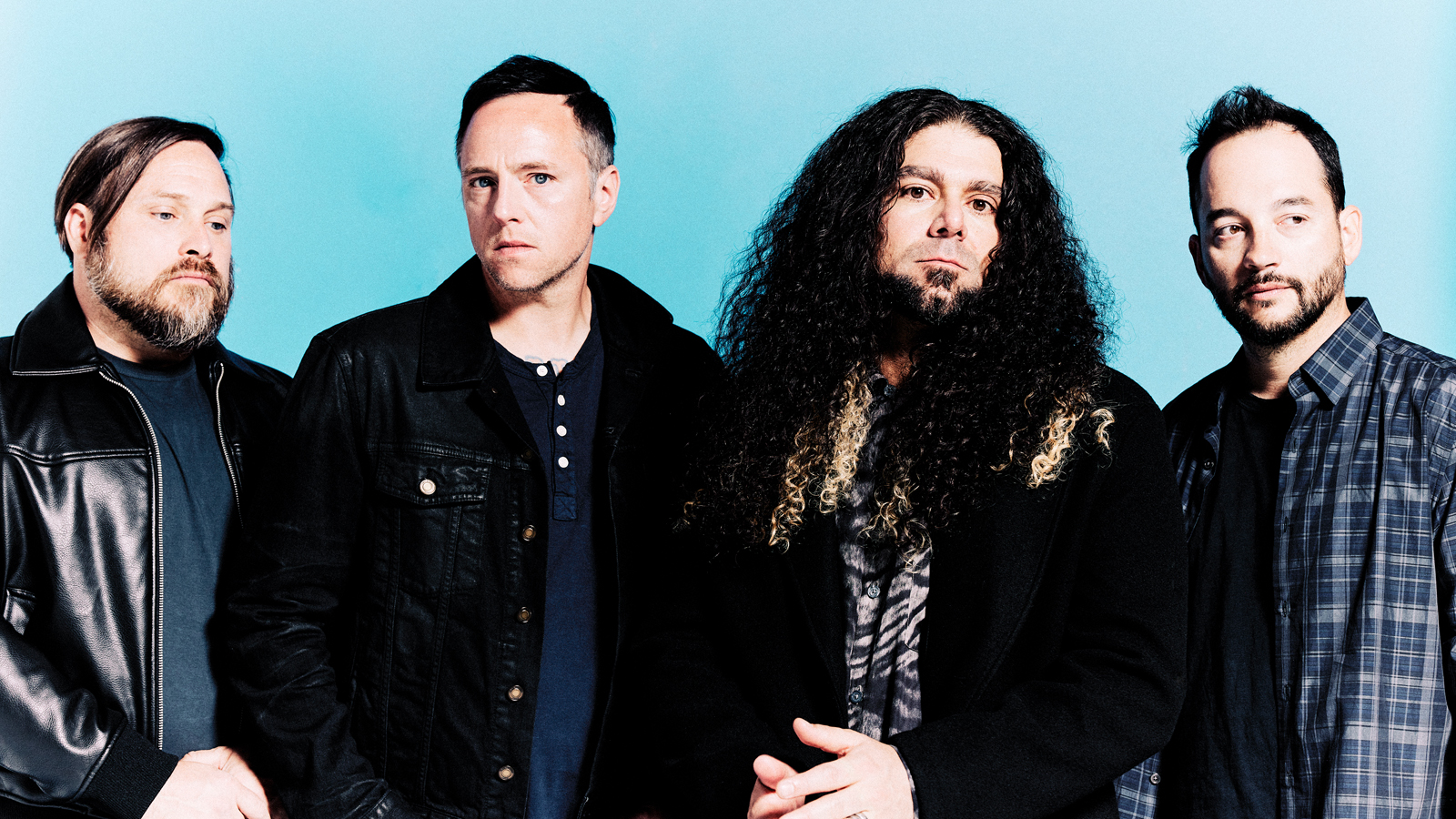
Of course, as you’d expect, we were pretty keen to find out how the frontman chooses the gear he uses while recording and crafting such an album. But we were surprised to learn that Sanchez has a pretty fast-and-loose approach to recording. His focus is predominantly on the song, and everything he does is in service of the track.
“Everything you hear on the record is the songwriting,” Sanchez states. “As I start to get deeper into my life as this person in Coheed and Cambria, I really find that I want to cherish the inception of the songs. And that's what these are.”
Going into more detail, the singer says, “You're hearing the songwriting. From there, I take it and I pass it around and people add their elements and we get into the studio in LA and we really, cohesify it — if that's even a word,” he says with a laugh.
This guitar is too bright, so I need to mute it – I'll throw on a rubber hose from the hardware store
“I'm chasing an emotion, and sometimes it's not about the gear that I'm using. I mean, sure, there are moments where a certain sound will inform a vibe, but when I'm writing, it's usually pretty basic, until things start to make sense,” he clarifies. “Like, for example, in 'Yesterday's Lost,' I'm starting on an acoustic guitar, but this song is so intimate. For me, I wanted to capture the idea of when I was younger and would use cassette four tracks and the low fidelity of that."
“I'll start playing, and what's coming out will then sort of dictate [the direction the song goes]. This guitar is too bright, so I need to mute it. I'll throw on a rubber hose from the hardware store to give it that sort of pizzicato, plucky, dull sound.”
Continuing to explain the recording process, he says, “From there, it's like, okay, well, I definitely want strings to accompany this. But before I do that, why don't I use a Mellotron to try to give us that low fidelity, that warble that this needs to feel that way.”
“It's really the emotions and the story of the song that, most of the time, will inform the elements that come into play. Of course, there are moments where a piece of gear will do that as well. But for me, it's always a rush to capture the vibe that you're feeling when you're writing the song."
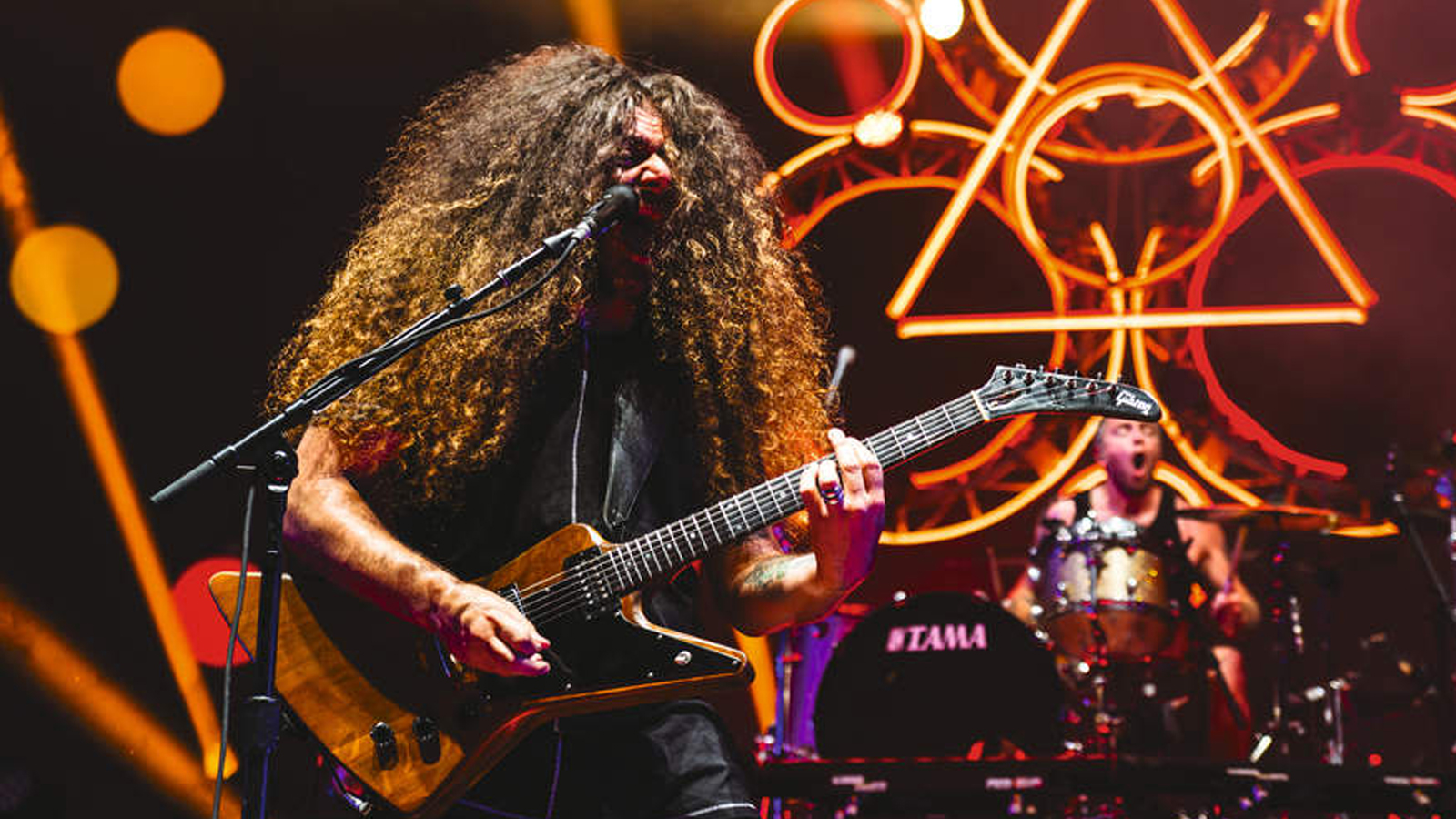
The example he brought me was from their import line. So I got a real sense of what these would really look like when we get them out to the masses
Moving on, from the new album, the conversation shifts to Sanchez’s latest commercial venture, Evil Instruments. Most well-known for playing a Gibson Explorer, fans of the band have been screaming out for a signature model for years, but unfortunately, those pleas have fallen on deaf ears.
Not being one to shy away from a challenge, Sanchez has decided to take matters into his own hands, designing his very own signature model, the daring and radical Jackhammer.
“You know, we've been talking about doing a signature guitar for some time, but it was just always met with false starts," he explains. "So I thought about the comics and the DIY methodology of Coheed, from the early days, and I started to think about the guitar, and the potential of doing my own guitar.”
He teamed up with U.S. manufacturer Dunable to bring the model to life. Although prototypes weren’t ready in time to make it onto the album, a Dunable staple did see some recording action.
“So I met with a couple of companies. I met with Sacha of Dunable. We hung out,” recalls Sanchez. “I saw the workshop in L.A., and when he came to a show, he dropped off one of their Gnarwhal models, and that's what I actually used on some of the demoing [for the new album].
“I became really comfortable with what they do," he continues. “So that's why I chose them. The example he brought me was from their import line. So I got a real sense of what these would really look like when we get them out to the masses.”
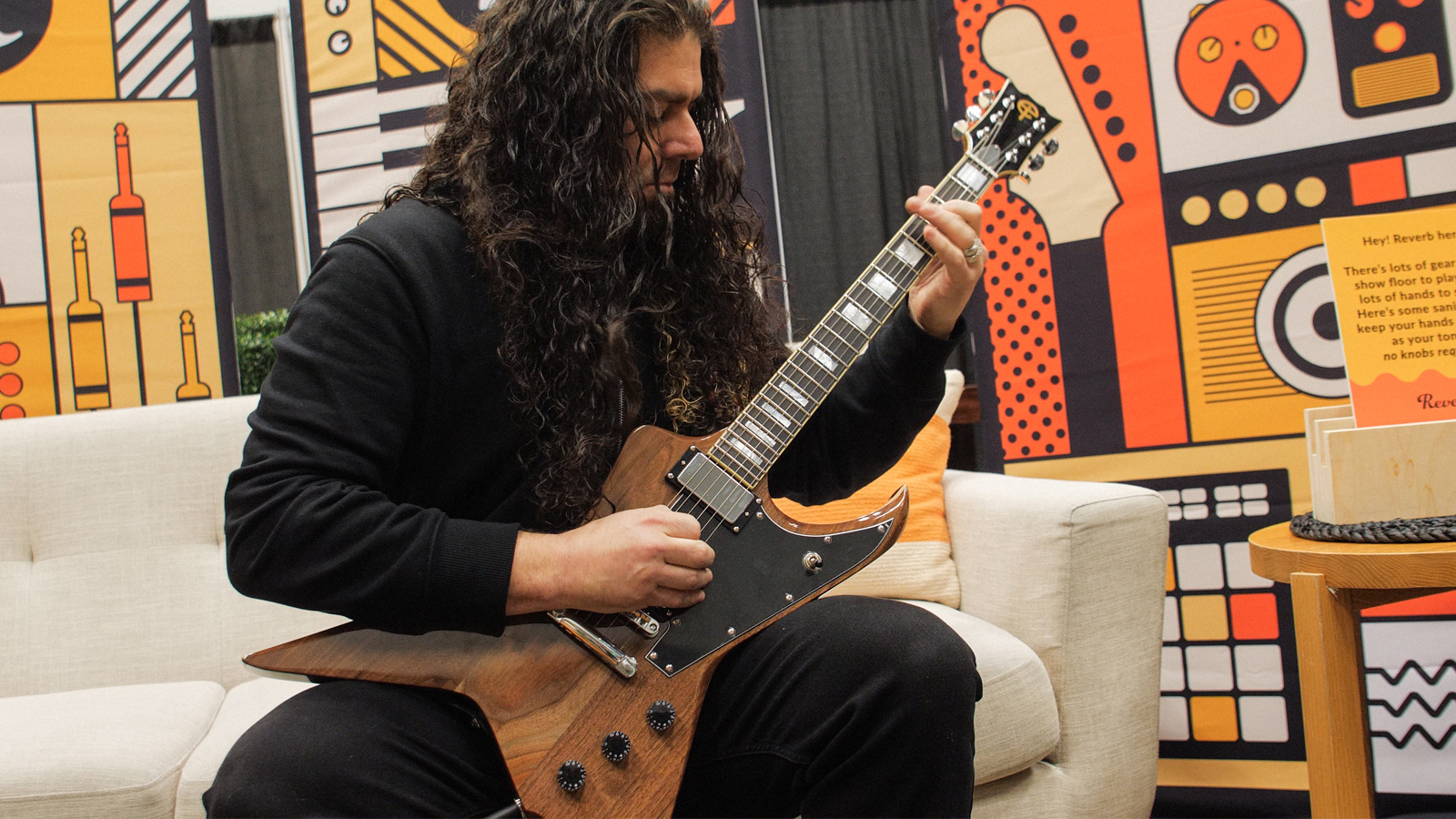
Speaking of the import models, the new Jackhammer comes in both a premium and a more affordable variant. When quizzed about how important it was to make his new signature model accessible to younger players, Sanchez explains that he has a soft spot for more budget-friendly guitars and chooses not to go anywhere without a beloved, affordable Fender Stratocaster by his side.
“It's totally important, because my first guitars weren't [expensive],” he says. “Actually, it's funny. I have a guitar out here, my third guitar, which my dad helped me buy when I was in high school. It was a Fender, but it wasn't an American-made Fender, and I still have it. I love it,” he says, smiling. .
I want everyone to play the guitar. I don't wanna make it obsolete to anyone
“I love that guitar. It's my practice guitar. I take it now on every tour and actually everywhere I travel. Definitely because of the nostalgia, but I also think it feels great,” he admits.
“I had an Epiphone Les Paul at one point,” he adds. “That was my second guitar. My uncle happens to be a Latin music producer in Puerto Rico, and he had one sitting around the studio, and he gifted it to my father, who gave it to me.”
Turning his attention back to the Jackhammer, Sanchez continues, “So, yeah, the [more affordable] guitars were important. I want everyone to play the guitar. I don't wanna make it obsolete to anyone.”
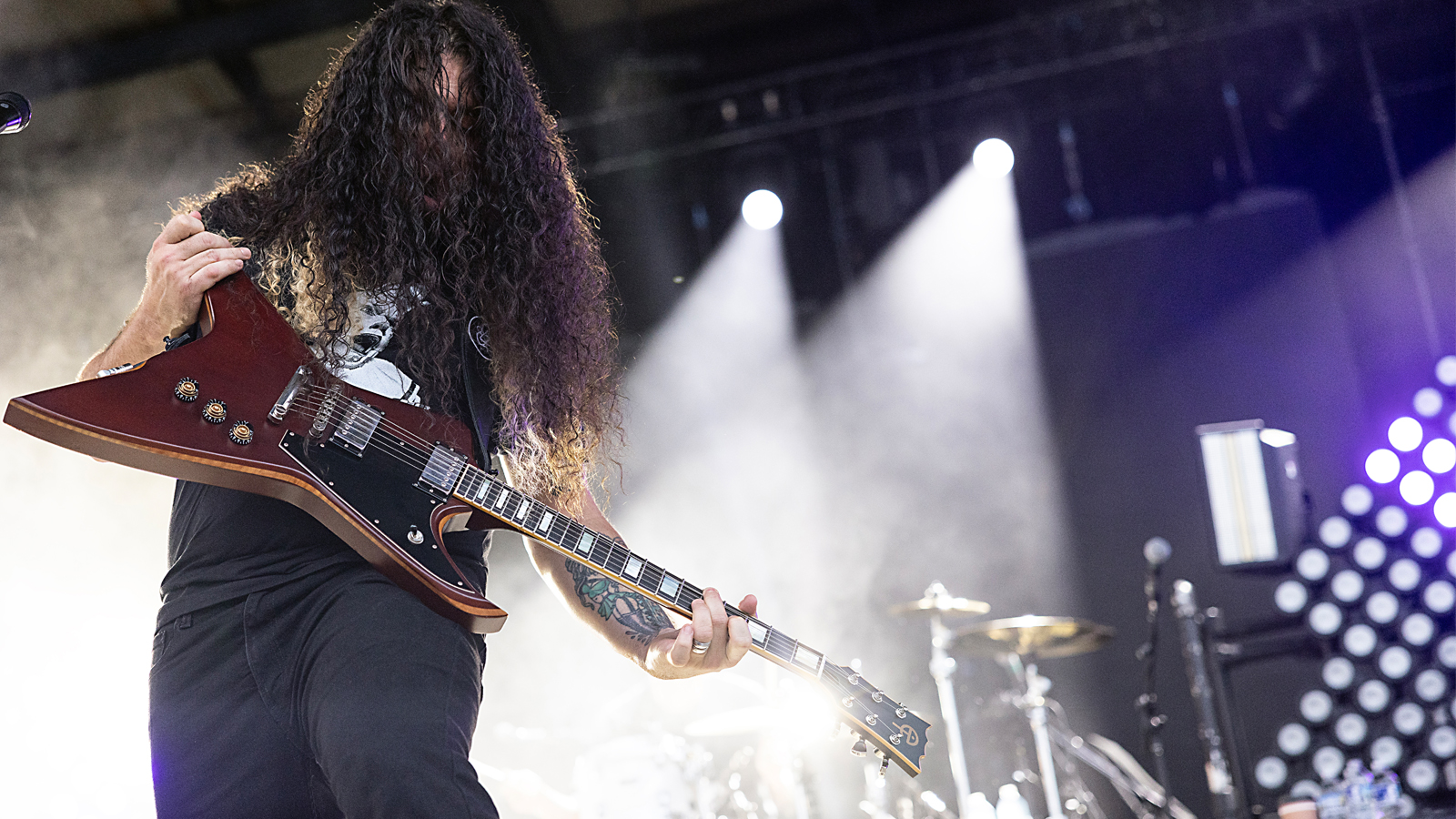
It started to remind me of the weapon from the movie Krull from the eighties
Now, Coheed and Cambria have always had a strong visual identity, so it’s only natural for that visual flair to make its way into the design of the Jackhammer. We were curious to learn how the frontman came up with such a striking design. As it turns out, it was all thanks to a long flight and a handy mobile phone app.
"I was on a flight to visit my in-laws, and I just opened up an application on my iPhone, and I just started to collage together a shape out of the guitars that I’d come up playing," he says. “You know, Explorers, SGs — guitars that attributed to my being here. I still have the collage on my phone. It’s made up of an E2 Explorer, which is my main guy, but then I tried to get the SG-shaped horn in there, too.
“I also started to think about this, as I was putting it together, before I called it the Jackhammer. It started to remind me of the weapon from the movie Krull from the '80s. You know, especially with that horn shape. The weapon was called the Glaive. So yeah, when I saw [the guitar], it gave me that connection, because that's one of my favorite science fiction fantasies of all time. I was like, ‘Oh, this is it,’” he says with a laugh.
“I sent it to my guitar tech, who is also a luthier. And I was like, ‘Hey, how realistic is it?’ We created a semi-working prototype. We kinda rushed it, but it was enough for me to kind of use my imagination,” he admits. “I mean, here it is, in front of me, and with the right tweaks, we can make this thing work. It was exciting.”
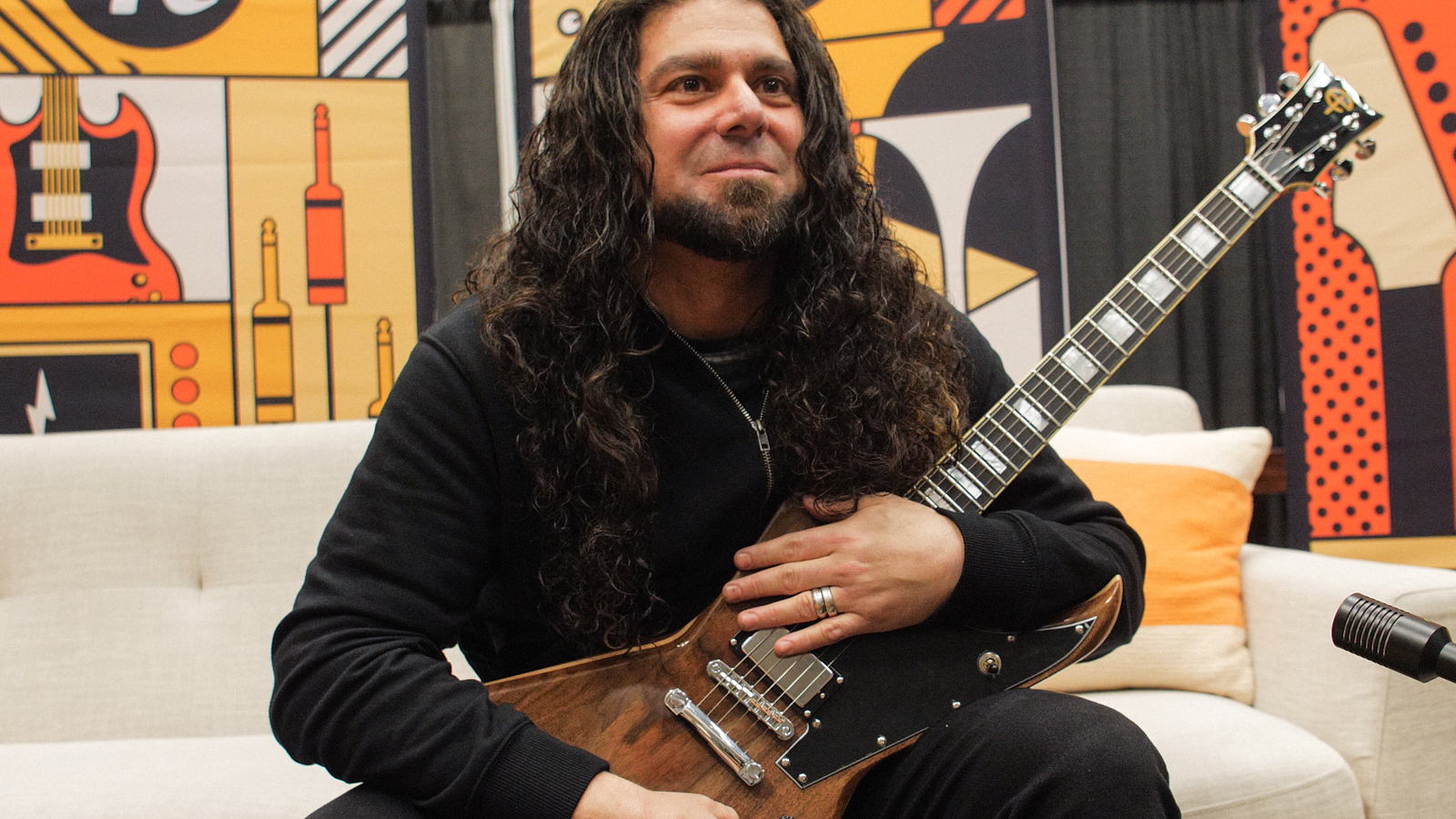
If the guitar doesn't feel good, I don't buy it
Diving deeper into his design choices, we were keen to discover any non-negotiable spec details that had to be carried over from his beloved Gibson E2 Explorer. But as Sanchez explains, he’s not one for nitty, gritty details; he makes decisions on feel.
“For me, I don't think there were any non-negotiables. I was so open because I'm not a guitar builder,” he admits. “For me, I definitely wanted the neck to feel as close to the neck profile of the E2 as possible.
"It's funny. I did the NAMM show, and somebody came up to me and asked me for the measurements and all this technical stuff. And it's like, that's not me,” he says with a chuckle.
“If the guitar doesn't feel good, I don't buy it. I'm not gonna sit there and tell you, like, 24 inches blah, blah. I have no idea,” he says with a laugh. “I wouldn't know where to start on any of that, and it's not important to me. What is important to me is comfort. For me, it was about getting as close to what I was familiar with.”
“What I love about [the Jackhammer] is that it's the perfect combination of classic and extreme. It feels like an old guitar, like, as much as it kind of looks like a metal-ish, extreme guitar, it has the essence of classic Gibson [models].”
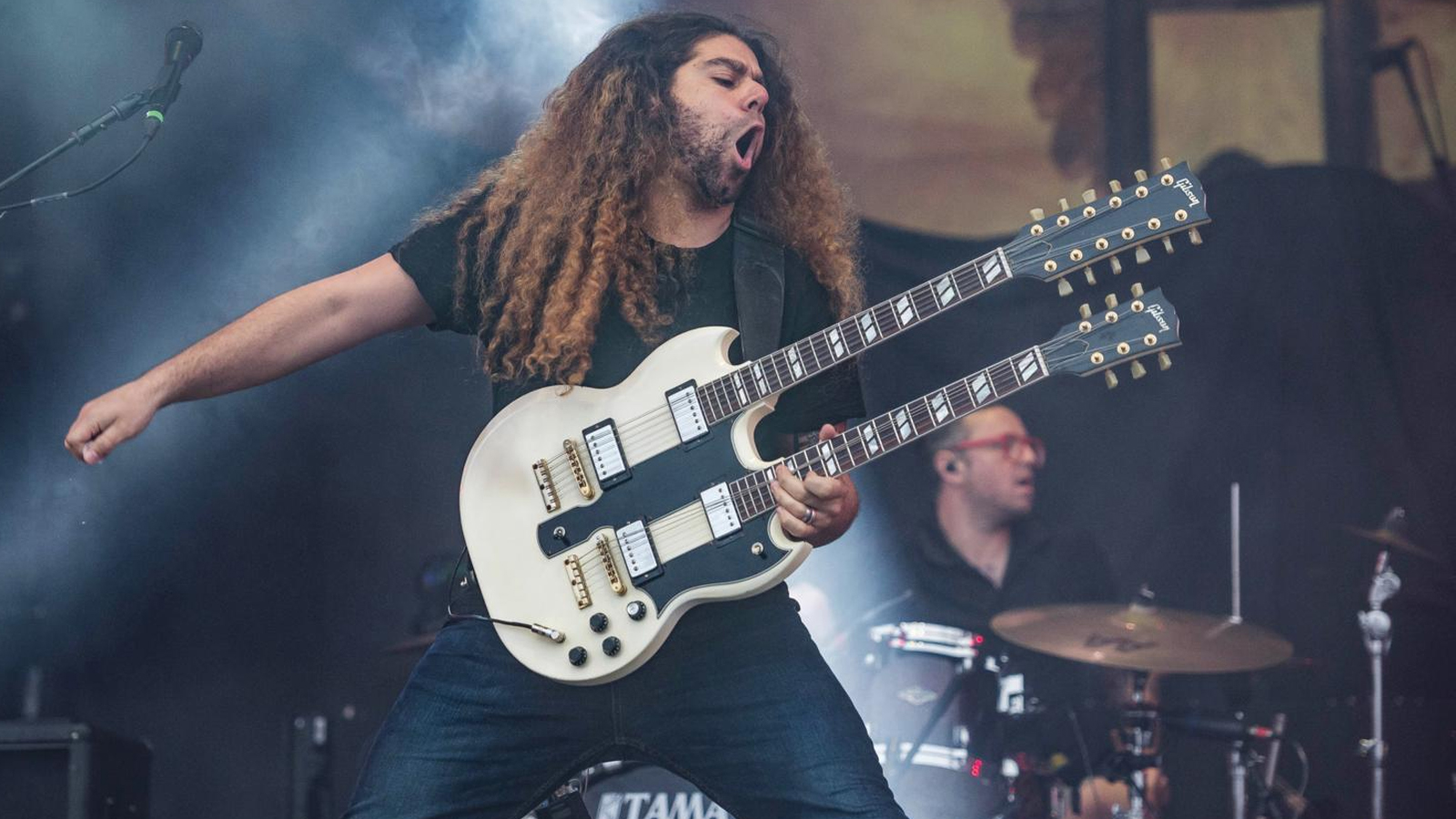
Speaking more on his design philosophy, he continues, “I always wanted to do an Explorer with a traditional Gibson headstock. I've always wanted that. Like, the head you’d see on a Custom Les Paul, but on an Explorer. So I definitely wanted to kinda do that with [the Jackhammer]. That was a big one.”
When quizzed to see if an open-book crowned Explorer bearing his name ever got discussed at Gibson, the frontman admits that talks never got that far along.
“I brought it up, but our conversations with Gibson never really got that far. I think at some point, somebody potentially was like, ‘it'd be cool to do a [signature] E2,’ but who knows who that was. Like, again, I don't know how, for real, those conversations were, to be honest.”
Now, we thought that launching his own guitar company would come with an influx of requests from his fellow bandmates for their own instruments, but as Sanchez tells us, his Coheed cohorts haven’t asked for their own signature models just yet.
“No,” he states with a laugh. “I think right now the run is pretty small, just to gauge the interest. And if there is room to do others, I do have a second model in mind, another body shape. But we'll see. It's really about how [the first run] goes.”
Keeping his cards close to his chest, Sanchez isn’t giving too much away. “It's kind of original and kinda based on something else," he says. "But we'll have to wait and see. It's cool, but I just wanna make sure that it's right.”
When pressed to see if fans can expect a double-neck Jackhammer for when the band breaks into their mega-hit "Welcome Home," the frontman enthusiastically hits us with, “I mean, maybe,” and laughs off the idea.
Prices for the new Evil Instruments Jackhammer start at around $1,600, and should be available to purchase soon via Reverb. Coheed and Cambria’s latest album, Vaxis – Act III: The Father of Make Believe, is out now, and you can catch the band on tour at various dates across the US, Europe, and the U.K.
First and foremost, I'm a guitar enthusiast – a fanatic, some might say. I'm a firm believer that most of the world's problems can be solved with a Gibson SG and a catastrophically loud amp. Before writing about guitars for a living as a Senior Deals Writer on Guitar Player, I worked in music retail for 7 years, giving advice on guitars, basses, drums, pianos, and PA systems. I also have a passion for live sound; I'm a fully qualified sound engineer with experience working in various venues in Scotland.

